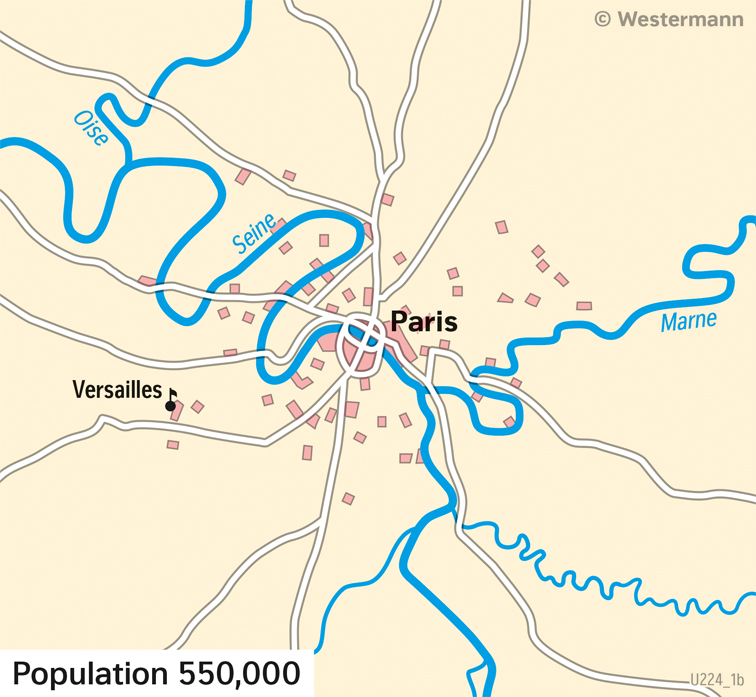Paris - Urban growth since 1700
Turn of an Era
978-3-14-100890-6 | Page 92 | Ill. 1

Overview
Close to a passage across the Seine in the area of the Île de la Cité, the Celtic tribe of the Parisi founded a settlement which was given the name "Nautae Parisiaci" after the subjugation of Gaul by Julius Caesar (52 BC). The Gallo-Roman town was abandoned in the course of the migration of the peoples, but, under the Merovingians, urban development began again on the same site.
Around 1800
In the course of the 18th century, the high nobility and upper middle classes moved their residences to the western districts of St-Honoré and St-Germain-des-Prés. The Avenue des Champs Elysées and other new boulevards or squares formed a kind of basic framework around which the upper classes in particular increasingly settled with sometimes palatial residences.
The historic buildings on the Île de la Cité with the church of Notre Dame were joined by new representative buildings. Thus, the old city palace, destroyed by fire in 1776, was replaced by the new Palace of Justice at the end of the 18th century. The overwhelming majority of the now 1.5 million inhabitants of Paris, however, did not live in wide avenues, but in old, narrow, winding alleys, which not only dominated the centre at that time, but also formed an increasingly dense ring of settlements outside the core city.




